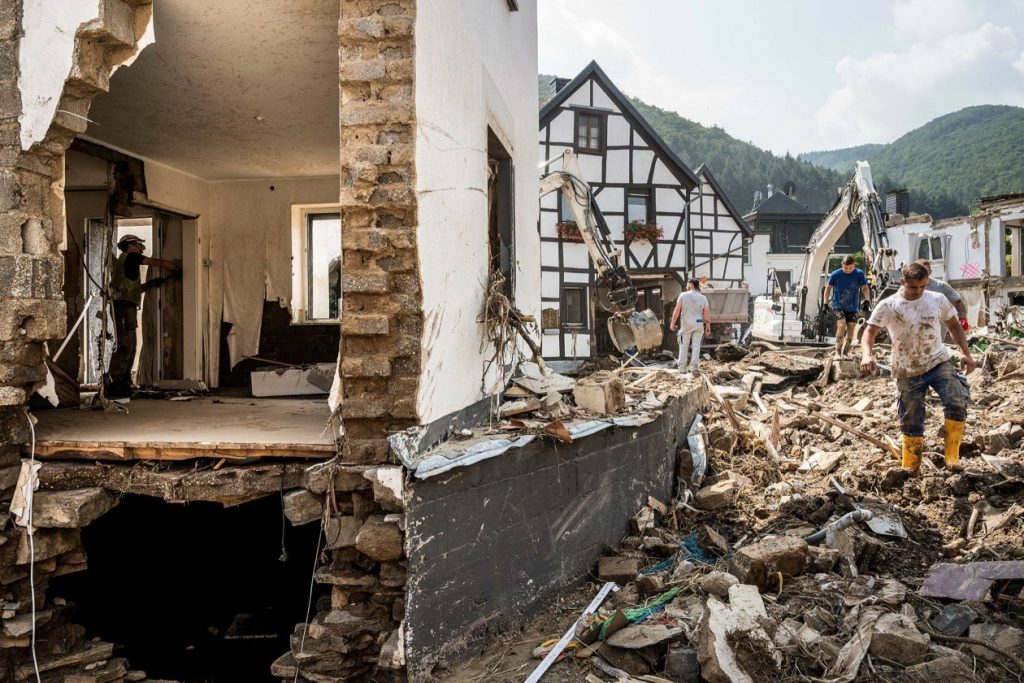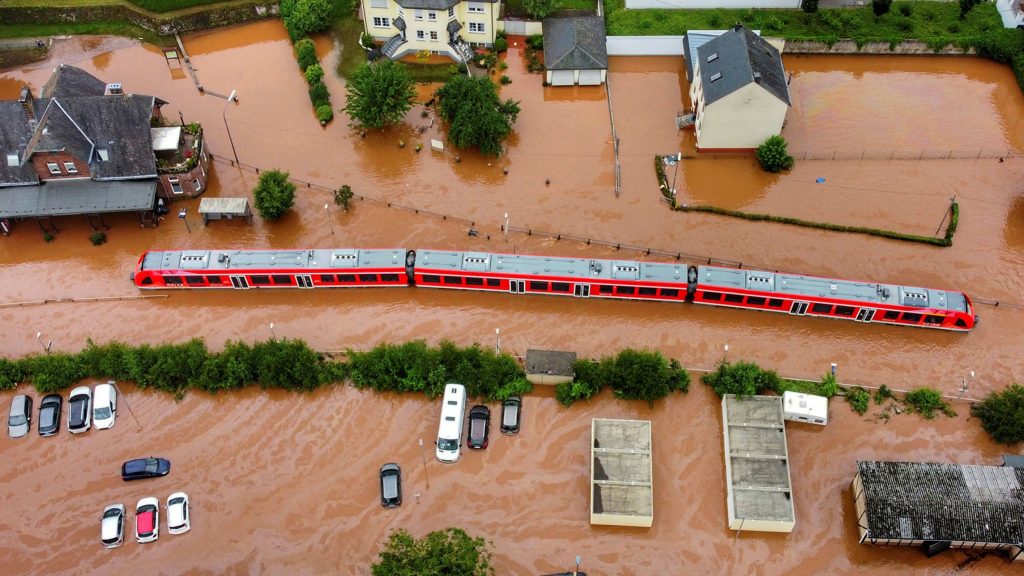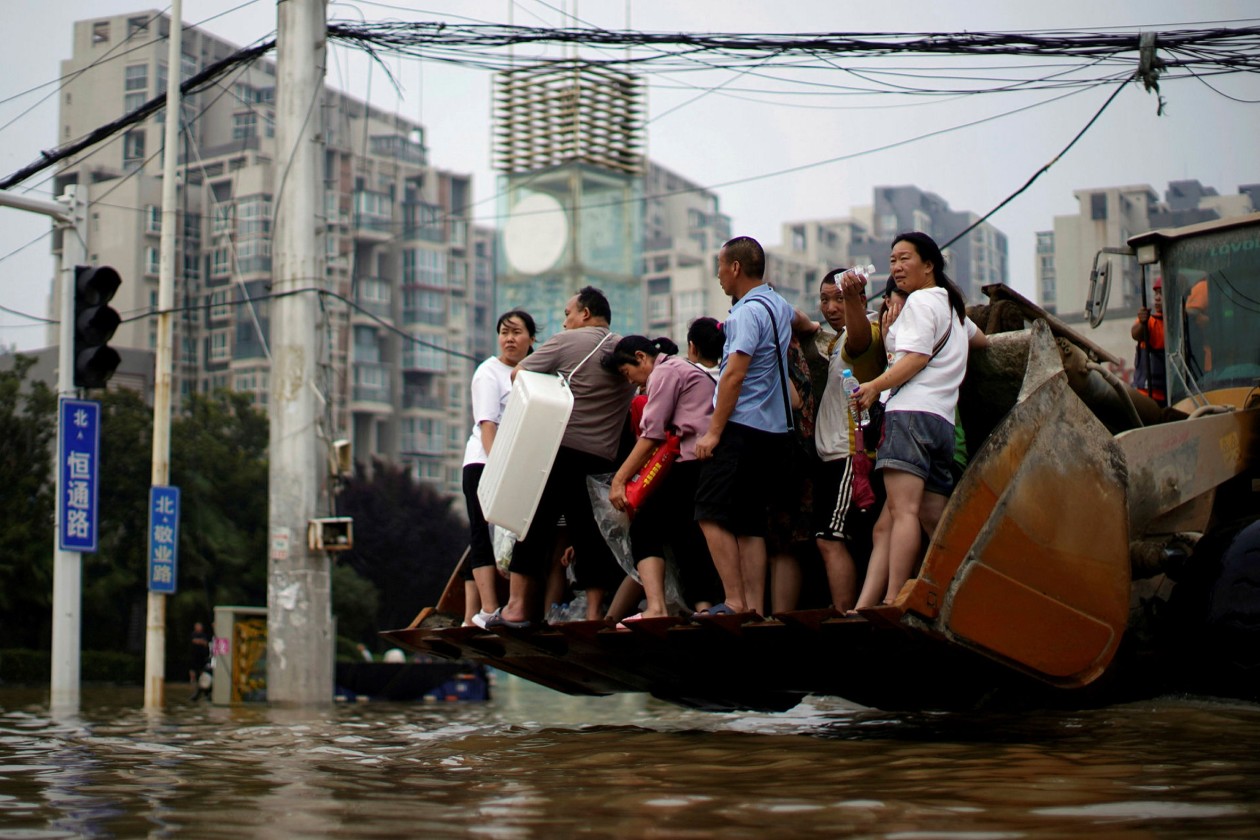In addition to the coronavirus outbreak, another crisis with far-reaching and serious human impacts is worsening. This summer’s high temperatures in North America, torrential rains in Western Europe and East Asia, and forest fires in Siberia and the eastern Mediterranean are just previews of the future.
What will the future of extreme weather look like in the context of global warming? What should we do to meet this change? From now on, news will be published a series of reports to try to find the answer to the question.
On the morning of July 12th, when Zhang Lei’s family set off from Brussels for camping in the eastern Ashan district, the weather was fine, with temperatures in the 20s and sunny skies, which was already hot in Belgium. The fine weather excited the group about the upcoming mountain camping.
One of Belgium’s most scenic spots, the Ashan district covers an area of more than 10,000 square kilometres and spans the Meuse River valleys of Belgium, Luxembourg and France, with an average sea wave of about 488 metres. However, what made “Ashan” famous is that during the two world wars it became the most intense battleground.
What the Zhang Lei family didn’t expect was a natural disaster that swept through the entire Ashan district and surrounding areas, causing the worst loss of life and injury in Europe since World War II.
Just over halfway through 2021, a spate of extreme weather disasters around the world has raised concerns and fears that the coronavirus outbreak could mask another, more far-reaching and serious crisis, the approaching climate crisis.
In many ways, 2020 has just passed: one of the three warmest years on record (2016, 2019 and 2020); fearsome wildfires burning from Siberia to Australia and even the United States; record numbers and sizes of hurricanes in the Atlantic; and the worst flooding in more than two decades on the Yangtze River in China.
Extreme weather events around the world have even provoked a strong response from the United Nations so far this year. On August 9th the sixth IPCC report, completed by 234 scientists, sent the world’s starkest warning: that humanity needs to take full responsibility for climate change. And for the first time, a study has been published on the link between climate change and extreme weather events.
There is ample scientific research and evidence that the severity and frequency of extreme weather disasters are “breaking records” and that climate change is increasingly becoming a factor that cannot be ignored. Further warming of the planet in the 21st century is likely to continue to exacerbate the most extreme weather events. If we don’t change our perceptions and behaviors and get ready soon, we’ll pay a bigger and bigger price.
The earth’s alarm is sounding louder and louder, and we have less and less time left.
Mount Ashan is in distress
On the evening of July 13th, the rain began to fall heavier and heavier. By midnight, the sound of heavy rain hitting the tent was so loud that Zhang Lei couldn’t sleep.
It was not easy to stay up until dawn, after pulling the curtain open Zhang Lei found that the whole tent has been soaked in water.
The rain began to fall in the early morning of the 13th, and at first it was not very heavy. Zhang Lei decided to go into the mountains as usual. The rain didn’t stop until it began to get bigger in the evening. On the morning of the 14th, managers told Zhang Lei that the whole mountain area would be closed due to heavy rain. Helplessly, Zhang Lei’s family decided to hit the road back to the house.
Just five minutes’ drive away from the mountains, Zhang Lei found that the road on one side had been completely covered by the floodwaters flowing down the mountain, and that vehicles could only slowly alternate one-way traffic under the command of a special person.
On the evening of the 14th, Zhang Lei’s family finally returned to Brussels. At this time, the heavy rain that also fell in western Germany is extending the shadow of disaster to more people.
According to Germany’s National Weather Service, in the 24 hours from July 14 to 15, the western region, where the soil was nearing saturation, received about 100 to 150 mm of extreme rainfall, equivalent to two months of rain as usual. In the end, floods triggered by the torrential rains killed at least 188 people and destroyed tens of thousands of homes in Germany alone, making it the worst natural disaster in Western Europe since the end of World War II.
Zhang Lei, who feels “escaped”, is still haunted, “I have lived in Belgium for 18 years and have never experienced such heavy rain and flooding.” This is the first time. “Fortunately, it came out, and it might not be possible to come out a few hours later.” She told the news.
In the days that followed, the death toll in Belgium has been rising, with at least 41 people killed and thousands of homes destroyed. But the disaster weather didn’t end there. On 24 July, torrential rains and flooding returned to the south, reigniting the danger.
From July 17 to 23, Henan continued to experience extreme rainfall, and on July 20, Zhengzhou, the provincial capital, was hit by heavy rains, with rainfall exceeding historical extremes. The heavy rains killed more than 300 people and caused economic losses that were difficult to measure.
Heavy rains and floods in Western Europe and Henan, China, are like a microcosm. Over the past decade, scientists around the world have conducted many studies showing that extreme rainfall and flooding are becoming more extreme and frequent.
The fifth report by the United Nations Intergovernmental Panel on Climate Change (IPCC) concluded that the number of heavy precipitation events on land is likely to increase rather than decrease in more parts of the world since 1950 (> 66 per cent probability), with North America and Europe being the most likely, while central North America has a more severe trend of precipitation events (> 90 per cent probability).
The Met Office’s global extreme weather statistics show that overall heavy rainfall events are increasing globally, meaning the heaviest days of the year are becoming wetter. These short and intense rainfall cycles can lead to flash floods with devastating effects on infrastructure and the environment.
It is worth noting that while extreme rainfall is increasing, other extreme weather phenomena, including drought and high temperatures, are becoming more frequent. Together, they tend to cause even greater disaster.
One detail of the floods in Western Europe that has not attracted much attention is that since December 2020, European shipping media have pointed out that the Rhine has repeatedly dropped to critical levels, with frequent alternating droughts and floods. This has set the stage for both the july floods and the growing challenge for the transport industry. European scientists say the change is largely due to increasingly unpredictable weather patterns, including prolonged heavy rainfall, frequent dry conditions leading to drought and melting glaciers in the Alps.

Why is more and more extreme rainfall occurring more and more frequently?
“Today’s weather patterns are usually a combination of the chance of weather and changes in boundary conditions caused by a significant increase in greenhouse gases in the atmosphere. For some extreme weather, however, they are almost impossible without global warming. Stefan Rahmstorf, a professor of marine physics at the University of Potsdam in Germany, told www.thepaper.cn.
For extreme precipitation events, scientists now believe there are two main reasons: climate change (warming) causes more moisture in the atmosphere and low pressure caused by slower circulation.
“More than 30 years ago, climate models predicted that extreme precipitation would become more frequent and days of less rainfall would become less frequent,” Ramstov further explained. This is the result of physics: every time the temperature rises, the amount of saturated water vapor in the air increases by 7%. However, for every degree of temperature increase, the evaporation intensity of the surface increases by only 2-3%, which is different. Therefore, more time is needed to evaporate, so that the amount of water vapor in the air to the extent of rainfall, and in the process of rainfall, surface evaporation is much lower than the amount of precipitation, which also leads to less rainfall but an increase in extreme events. ”
This is part of the reason for the extreme precipitation that henan, China, has experienced in recent days. According to the China Meteorological Administration, an unusually large amount of water vapor along China’s southern coast was blown inland by Taiwan, and rain clouds stagnated in a low-pressure vortex over Henan, creating a series of slow-moving, intense storms.
Another factor affecting rainfall is the weakening of the summer atmospheric circulation, which controls the weather in the northern hemisphere, which, when high-speed air flows become slow and unstable, often means that heat waves and droughts (related to high-pressure systems) and storm surges (related to low-pressure systems) become more persistent. This phenomenon is known as planetary wave patterns. The World Meteorological Organization says this summer’s unusual “planetary wave pattern” has brought unprecedented heat, drought, cold and humidity around the world.
“The weakening of atmospheric circulation is related to the three times as much warming of the Arctic as the rest of the world in recent decades. This weakens the temperature gradient from the subtropical to the polar regions, and normally our weather patterns move from west to east, and now the engine is weakened. As a result, what was supposed to be a few days of hot days turned into a sustained heat wave, with a ‘stuck’ low pressure leading to continuous rainfall. This is also the reason for the heavy rains in Western Europe. Ramstoff said.
Although many factors can lead to extreme weather events, the extent to which climate change caused by human activities can have an impact is the focus of the question.
In response, more than 350 peer-reviewed papers published by scientists around the world since 2004 show a growing body of evidence that human activity is increasing the risk of certain types of extreme weather. Seventy per cent of all extreme weather events are thought to be exacerbated by climate change.
Of the 81 studies on rainfall and flooding, 58 per cent of the events found that human climate change activity made it more likely or more serious. This is relatively small compared to other extreme weather events such as persistent high temperatures. Myles Allen, professor of geography at Oxford University, told Newsbeat: “This reflects the fact that rainfall and flood events are inherently more complex and that natural variables still play a role in many ways. At the same time, other factors, such as land use and drainage facilities, play a role in whether extreme rainfall causes flooding. ”
Ramstoff also believes that climate change has less impact on the increase in extreme precipitation events than other extreme weather events. “Because natural change has a greater impact than climate change. Therefore, we cannot say whether extreme rainfall events are the result of global warming, but we can say that such events have become more frequent as a result of global warming. He said.
More studies have shed more light on the effects of climate change on extreme precipitation.
A study published July 6 in Nature Communications by researchers at the University of California, Los Angeles, found that the effects of man-made climate change have been evident in global statistics on extreme precipitation since the 1980s. By studying global meteorological records and examining several sets of observed precipitation data, the researchers found evidence that human activity affected extreme precipitation. The study found that human activities such as greenhouse gas emissions and land-use change are key factors in extreme precipitation events such as floods and landslides around the world.
Another study in the journal Nature shows that the intensity of the most severe extreme precipitation events increases with global warming. However, the frequency of such events in a warming world is less certain. If this trend continues, the strongest precipitation events observed today will double with each one degree increase in global temperatures.

When the “once in a hundred years” becomes often encountered
Will extreme rainfall and flood events increase in the future? In fact, the “more extreme and frequent” scenarios predicted by scientists may have occurred.
Heavy rains and floods in Western Europe and China have shown that both developed and developing countries are affected by extreme weather, and many cities and people are not prepared.
Since 1980, floods have caused more than $1 trillion in damage worldwide, and the situation is set to worsen, said Luo Tianyi, senior data adviser at the World Resources Institute’s Beijing office and director of the Global Watercourses Project. Their analysis found that the number of people affected by floods worldwide will double by 2030.
“The number of people affected by river flooding will increase from 65 million in 2010 to 132 million by 2030, and the number of people affected by coastal flooding will increase from 7 million to 15 million. This is not only a threat to human life, but also to the economy: urban property damage from river floods will triple, from $157 billion a year to $535 billion. Urban property damage from coastal storm surges and sea-level rise will increase tenfold , from $17 billion a year to $177 billion. Luo Tianye said.
What does this new normal mean for us?
The immediate risk of extreme rainfall is an increase in flooding. In urban areas, impermeable roads force water to flow rapidly into sewer systems, posing a serious threat to urban underground transportation systems. Heavy precipitation also increases the risk of landslides, which can destabilize slopes when above-normal levels of precipitation raise the water table and saturate the ground. Excessive precipitation can also reduce the water quality of drinking water sources, endangering human health and ecosystems.
“We recommend that companies do environmental stress, or climate stress testing, ” Luo said. For example, your factory has encountered a once-in-a-century flood. Prepare for the worst based on our expectations of future climate change and the impact of flooding. ”
“The New York subway has done a stress test on the drainage system, pouring water directly into the subway to simulate extreme precipitation to test where the subway’s maximum carrying capacity is.” He said. “Once in history, once a hundred years, it could be 20 years in the future, and if we don’t make changes, we’ll encounter extreme weather more frequently, and we’ll pay more and more.”



